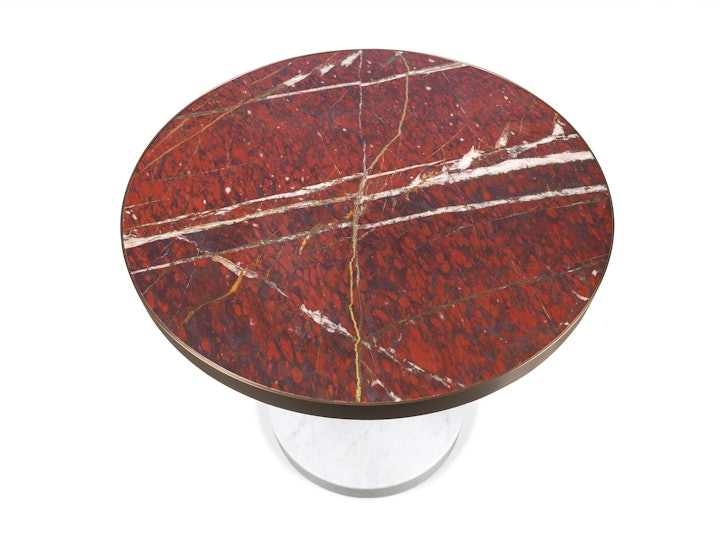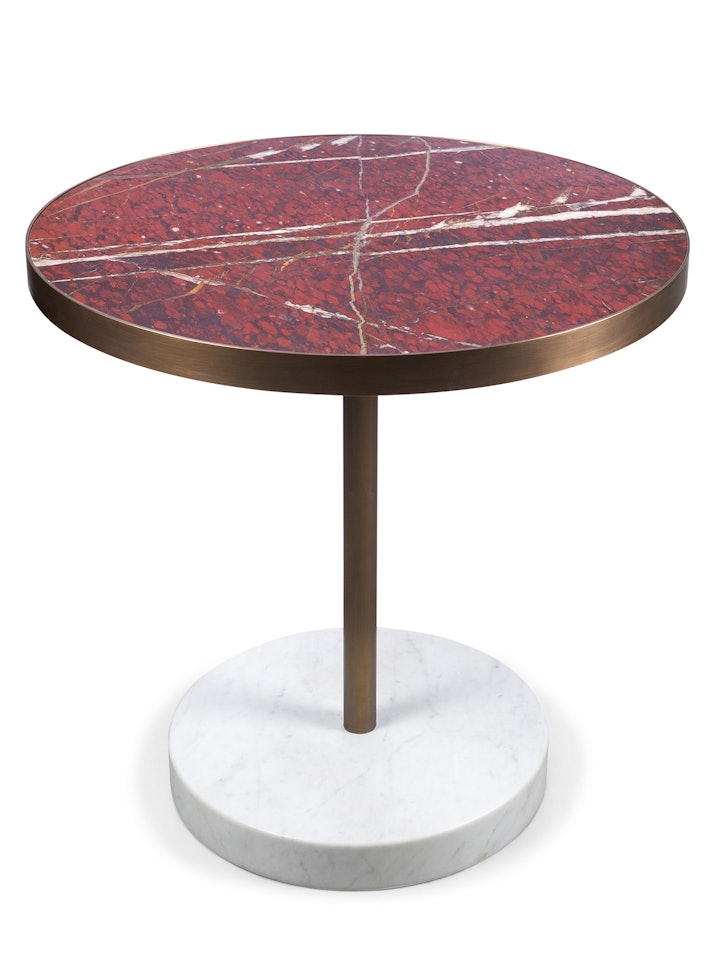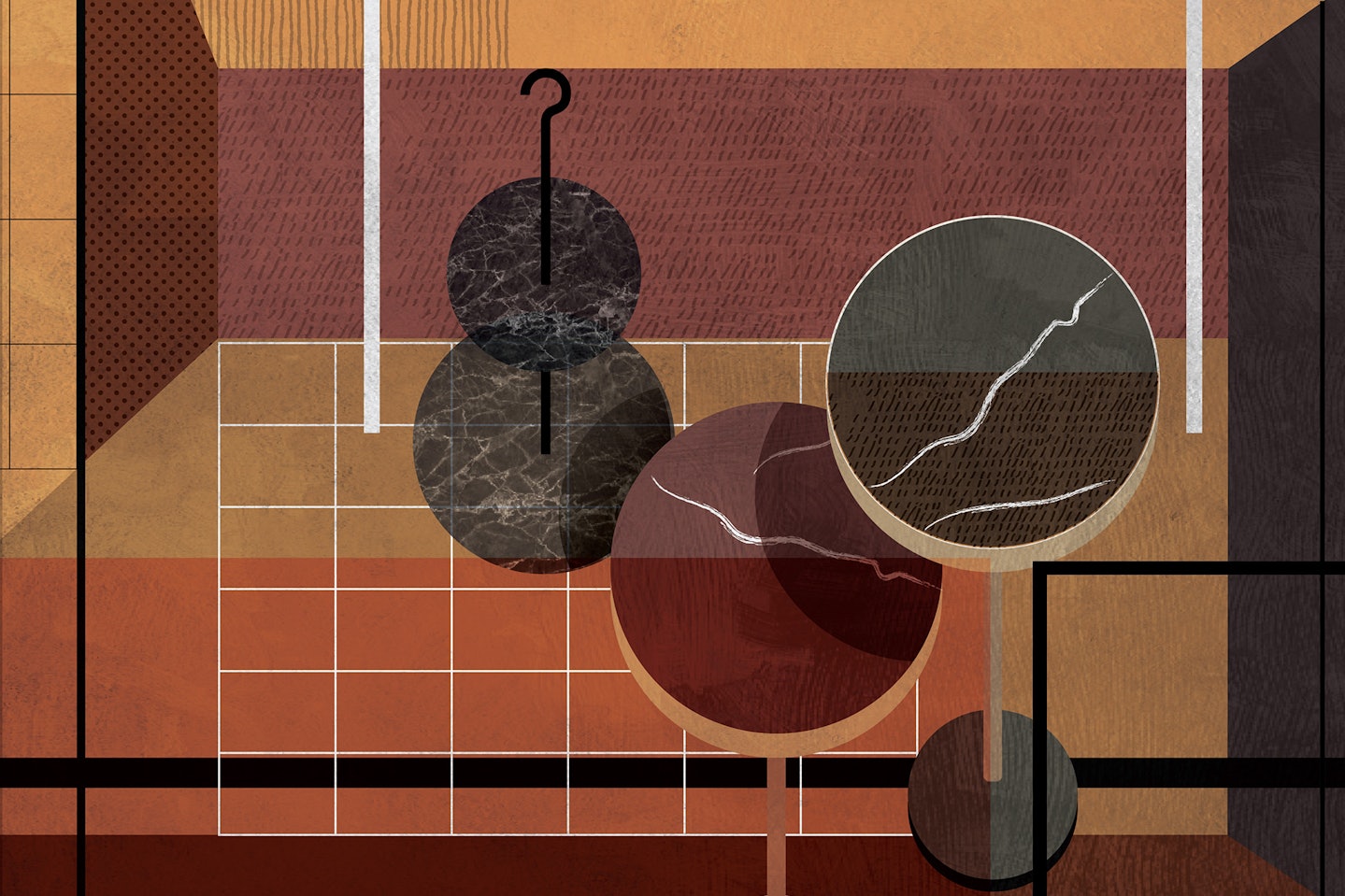The story of the lost stones
03.2022
Piero Lissoni and Gabriele Salvatori’s latest project together represents many years of conversation and cooperation
Few understand luxury better than Piero Lissoni. The Milanese architect’s pure forms and thoughtful consideration of materials are unrivalled within the landscape of contemporary design. His latest collaboration with Salvatori, the Lost Stones collection, is a testament to the maestro’s prolific hand. Formed of a series of elegant bistro tables constructed from the last remnants of historic stone — stitched together using the Japanese art of Kintsugi — the pieces are at once deeply profound and brilliantly new. The Lost Stone collection is also a tribute to the importance of friendship within a collaboration. Piero Lissoni and Gabriele Salvatori’s latest project together represents many years of conversation and cooperation. We sat down with CEO Gabriele Salvatori to discover the story behind the collection and discuss his long term collaboration with Piero Lissoni.

How was the idea of the Lost Stones project born ?
The idea, like all ideas, is the result of a maturation process. In reality, we have to go back a few years. Piero Lissoni asked me if I could make him “shabby” floors using old off-cut pieces of marble. In the following years, from time to time, this request came back to my mind, but I could never find a way to industrialise the process. Jump forward to 2018, when I find myself asking Piero to design me a bistro table, one of those classic pieces with metal edges found in the old Parisian bistros. Most of the time, they have a marble top, which is generally rather scratched or even split.
And so we got together to look for materials that might work and that’s where I recalled the idea of reusing old stones. I searched in my warehouse and I found some very old marble slabs, the ones I had been seeing since I was a kid and always wondered why they were still there. Like those things you find when you open a box in the attic after so many years; those things that smell of dust and that make your heart tighten a little because they take you back in time.
All of a sudden I looked at them with different eyes, I could finally see in them the beauty and dignity that they never lost, despite having been forgotten for years. I immediately called Piero and explained it to him, clarifying that we are dealing with remnants; in some cases, even very small quantities and often broken. Piero, who has an incredible speed in understanding things, fell in love with the project and acted as a sounding board, immediately telling me that if they are broken we can fix them like the Japanese do (with the Kintsugi technique) and that if the quantities are not big we don’t care. We will use the best we have. ‘We will call them Lost Stones!’ he said and made me smile.
From there, we started looking in every conceivable deposit. We found remnants of the same marble used by Mies Van der Rohe in the Barcelona Pavillion, some blocks of the same marble used in the cathedral of Notre Dame and a few slabs of another marble used in the Basilica of S. Pietro in 1500. After the quantity is finished, there is no more. You take home a piece of history — this is pure poetry.

How does this project work within Salvatori’s mission of sustainability?
The project is in perfect harmony with the company mission. We are tired of hearing about luxury; or, rather, we are tired of hearing about luxury understood as opulence. We like to think of a simple luxury, made of pure beauty and not dictated by market rules. Luxury is imbued by the pure beauty and well-being that arouses in the heart and soul of people. Working with stones — what Piero called “lost” — instead of going to look for pure marble without any vein is a bit like taking a dog with a prize-winning pedigree instead of fetching a dog abandoned in a kennel. In the end, if you are ready to see the beauty even in the eyes of the abandoned dog, you will feel much happier and at peace with the universe. Perhaps you will also have something more interesting to tell your friends the day you present your little dog — or in our case, your table made with a Lost Stone. Both have a noble value, and this, to me, is luxury.
What is it like working with Piero Lissoni?
You know when you have an idea and it seems a bit crazy — so call your even crazier friend?
This is what happens to me when I call Piero to propose things to him. Instead of counterbalancing your madness, he throws fuel on the fire. But I also have to say that I do the same every time he calls me with equally far out ideas.
Ours is first of all friendship and then working collaboration. I think I have never had a serious meeting with Piero, like the ones you see on television. Meetings are generally held at the bar in front of a cappuccino if they are in the morning, or in front of a martini cocktail in the evening. And generally, the bar where we go is just a small bistro with ugly and broken marble tables, whose bartender is called Rene — just like the table that Piero designed for me.
